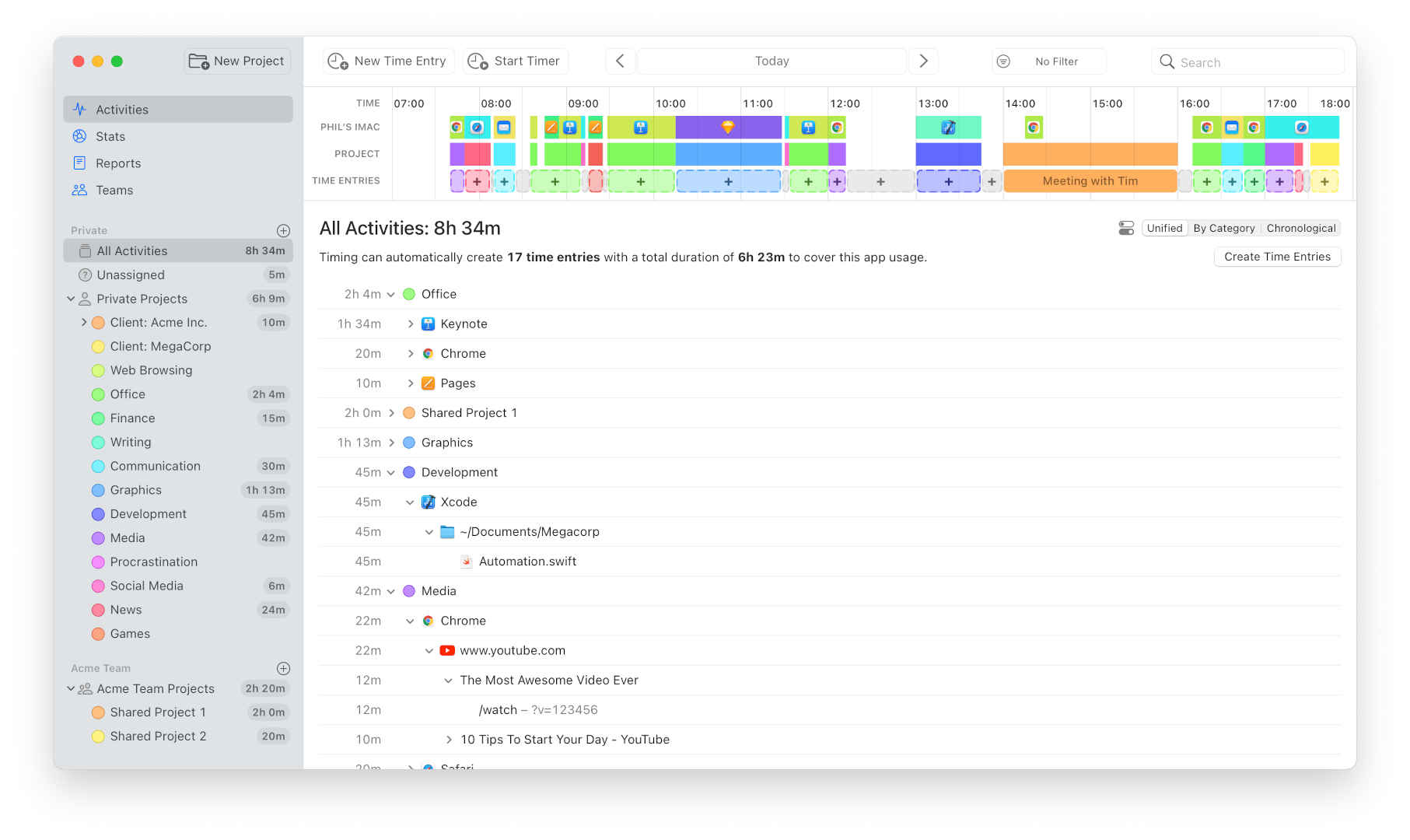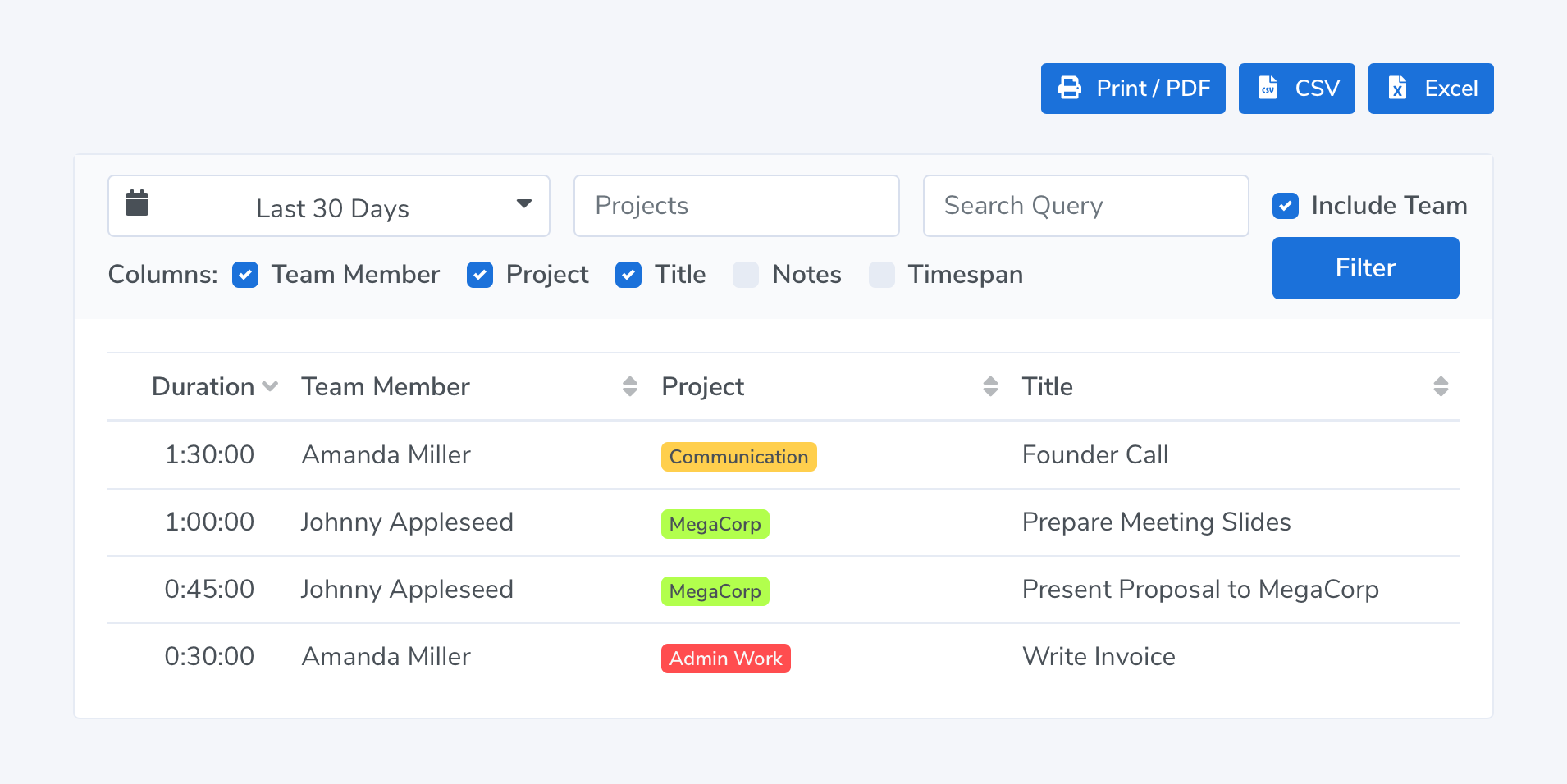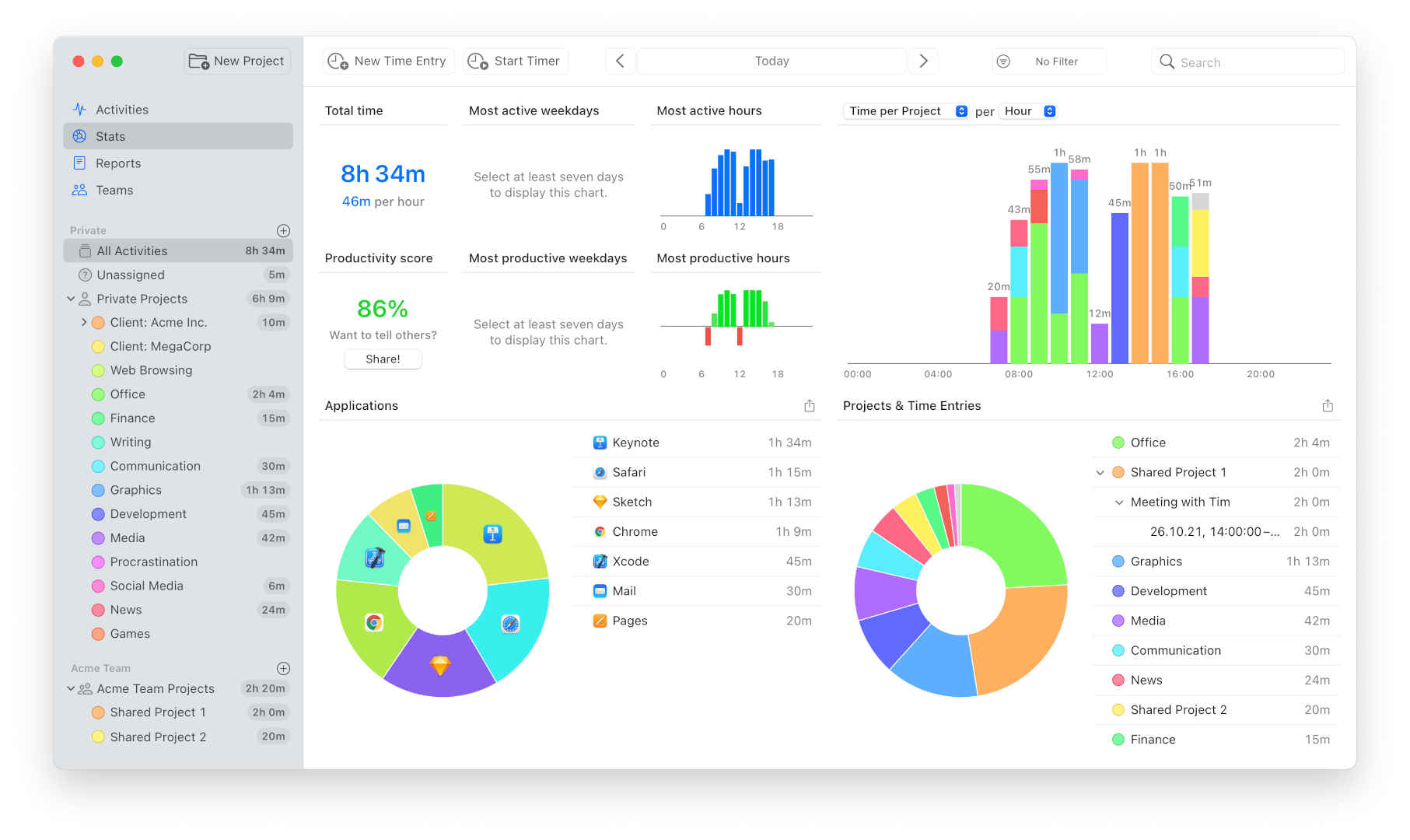Why Time Tracking is Critical for Remote Teams

Remote work is here to stay. While some companies still resist this new cultural trend, many embrace it. According to a study by The New York Times, 68% of employers “allow workers to telecommute as needed.” This trend was picking up speed before the pandemic, but COVID-19 seriously boosted it.
It’s no surprise that workers are happier and more productive when they control where and when they work. Some work better in the early hours before the rest of the world wakes up. Others prefer to work in the evening. Some sit at their cozy, in-home office, while others tour their city, visiting new cafes, parks, and libraries.
Remote work is popular among families, as well. Childcare costs are more expensive than ever, so working from home while kids play can be a significant income bump.
As remote work becomes mainstream, organizations must implement new workflows, systems, and tools to support this work style. They are finding new ways to manage their changing workforce, and one vital tool of this transition is time tracking.
We’ve discussed the benefits of time tracking in the past and the importance of using time tracking for teams. In this article, we want to focus on remote teams and the benefits time tracking offers for businesses and people.
As remote work becomes mainstream, organizations must implement new workflows, systems, and tools to account for this work style. One vital tool of this transition is time tracking. Share on XBetter Outcomes for Businesses
Remote team time tracking can remarkably affect your team and business. It’s a powerful tool for productivity, project management, and keeping the team aligned with business goals. Let’s go over the major benefits for businesses.
Identify Repetitive Projects or Tasks
Most jobs include some kinds of repetitive tasks. As a smart team leader, you’ll want to identify these tasks and either find ways to automate them with software or reduce them to a clear, streamlined workflow that anyone can perform as quickly as possible.
In an in-person work environment, you can see your team’s tasks at any given time, making it easy to identify these repetitive tasks. But if your team works remotely, you may only be aware of these time-wasting chores if your team members bring them to your attention.
Time tracking is a discerning way to identify these repetitive tasks. Reviewing your team’s time allows you to spot projects that take longer than they should. For instance, if you notice a social media marketer taking an unusual amount of time to schedule content, you might investigate and determine that a scheduling tool is needed to streamline the work. If a web developer spends 10 hours on a project that should only take seven, you might work together to find ways to automate or outsource certain pieces of it.
Here’s a sample of the activities timeline in Timing. As the team leader, you won’t be able to see this much information about each team member (for privacy purposes), but you can work with your team members to identify tasks that take too much time.

Set Realistic Deadlines and Estimates
As a team leader, you’ll undoubtedly have to create deadlines, estimates, quotes, or other predictions regarding your team’s work. Clients want to know how much it will cost and when you will deliver. Your own leaders will want to know when you’ll finish projects or when they can see results from their initiatives.
Deadlines are essential for your own team as well. Setting timelines that accurately reflect the work required for each project is critical. You won’t turn over projects quickly enough if your deadlines are too generous. If your deadlines are too tight, your team could struggle with stress and eventually burnout.
Time tracking is a simple way to aggregate the total time cost of your projects no matter where your team works. You don’t have to monitor their work or their schedules. In Timing, you don’t even need them to submit a timesheet. You can view each team member’s time on each project whenever you like. And since it tracks time automatically, you can rely on it when determining realistic timetables.
Stronger Business Forecasting

Making plans for the future is one of the most challenging parts of leading a team, especially when your team isn’t in the same office. You can’t turn to them and ask how long it will take until they finish a client’s project.
Time tracking allows you to see the future by examining the past. You can look at the amount of time your team members spend on individual projects to help you make decisions. For instance, if you notice that they’ve already spent 100 hours on a project you expected to cost only 75 hours, you know to adjust your expectations in the future. If they completed that 75-hour project in 35 hours, you might investigate why they were so quick and adjust for similar projects in the future.
Most importantly, reliable time-tracking data on your team’s performance can help with your cash flow. You’ll understand the actual cost of projects so you can charge appropriately in the future.
Better Project Management
When working remotely, you may find it challenging to understand who is working on each project. Are they prioritizing correctly and devoting enough time to each client or project? Are the right people involved?
Time tracking can improve your project management by giving you eyes on your team. It creates transparency in your workflow to ensure everyone is working on the appropriate projects and devoting their time where it makes sense.
In Timing, team leaders can see which projects their team members are working on at any time. (They can’t see the individual apps, URLs, and file paths, but they can see the aggregate of those items assigned to a particular project.) If you (as a team leader) notice that a key team member hasn’t participated in a crucial project yet, you could quickly move some people around to ensure that team members spend their time on what matters. Plus, Timing allows you to create as many projects as you need.
Here’s an example of a report the team leader can generate for the team. Notice how they can see the total time spent per project but not the individual tasks.

Better Outcomes for Remote Workers
Time tracking isn’t just for businesses. It can also make the lives of your team members simpler, easier, and more satisfying. Let’s go over the benefits of time tracking for remote workers.
Avoid Manual Timesheets
If the organization requires your team to create and submit timesheets weekly or monthly, your team probably dreads it. It’s a tedious task that takes them away from real, value-adding work.
Time tracking is an easy way to create timesheets. If you use the right time-tracking tool, your team can generate and submit a timesheet quickly to get back to more meaningful work.
Unsurprisingly, Timing excels in timesheets. This tool produces timesheets you can trust because users aren’t required to press stop and start timers. It captures everything the user does – every app, file path, and URL – but still respects the user’s privacy. Team leaders can only see aggregate project times, not a breakdown of Mac usage.
Accurate Payroll and Billing
Like most teams, yours probably works on several projects simultaneously, often for different clients. Things become even more complex when you need to distinguish between billable and non-billable hours. You won’t know how much to bill your clients and pay your team members without accurate records.
This problem is even more challenging for remote teams. As a team leader, you don’t have the opportunity to walk around and note what your team is doing. You can prioritize their workload and give direction, but you don’t know – for sure – how your team spends their time.
In many cases, the result is inaccurate billing, which can cost your organization a substantial amount of money. In other instances, you could be overbilling your clients, especially if your estimates are poor, which can jeopardize your relationship with those partners. Neither solution is acceptable, so accurate billing is critical.
Automatic time tracking creates an accurate, reliable picture of how your team spends their time. Nothing is lost or forgotten. Your clients pay what they owe and only what they owe. Your team gets compensated accurately for their labor.
Better Work/Life Balance for Everyone

The effects of workplace burnout are genuine. Employees who feel stressed, overworked, and unsatisfied with their job can suffer depression, fatigue, anxiety, misdirected anger, and isolation from friends. Burnout can cause medical issues like heart disease, high blood pressure, respiratory problems, and alcohol or substance abuse.
Regarding your business, stressed-out team members aren’t as effective as relaxed, well-rested employees who love their jobs. As a leader, it’s your job to help them find an effective work/life balance. Long-term productivity is far more valuable than squeezing every morsel of work out of them until they burn out.
How does time tracking help? Time tracking for remote teams helps you identify when your team members spend too much time at work. For instance, if you notice that a team member worked for 55 hours in a single week, you could open a dialogue with them to uncover why they spent so much time working and what you can do to ease the burden. Perhaps they are overwhelmed with projects or struggling to complete specific tasks. They will surely burn out if you allow it too long.
More Trust Between the Team and Leaders
It’s no secret that some employers and leaders are worried about their teams working remotely. Not all, of course. Many are embracing remote work. But some aren’t comfortable with the new practice because it prevents them from monitoring their team closely. This mistrust is hard to overcome, and it will take some time to do so.
Time tracking for remote teams is a big help here. It gives mistrustful team leaders reliable information about how their team spends their time. Over time, the team and its leaders will develop mutual respect and trust where everyone can feel secure knowing that everyone else is doing their job well.
Should employers use time tracking to micromanage their team members? Absolutely not. That would have the opposite effect by making team members mistrust their leaders. It’s also not an effective way to manage a team. The aversion to micromanaging is why we recommend using a privacy-focused time-tracking app like Timing that does not give team leaders access to minute-by-minute information, only the aggregate of projects.
Insight and Learning for New Remote Workers
One of the advantages of remote work is the ability to fit your life into your work. You can squeeze in a couple of tasks while waiting for the doctor. You could attend a meeting while your kids play at the park. You can take a midday nap and then recoup that hour in the evening after dinner. There’s tons of flexibility!
However, that flexibility can sometimes be challenging to manage, especially for new remote workers. If they lack the experience to manage their time wisely, a time-tracking tool can help orient them to their new work style. They can review their time at the end of the week to ensure they worked enough, worked on the appropriate projects, and completed their tasks as productively as possible.
Tools to Improve Performance
Team members need objective information to make themselves more productive and add higher value to the team. They need an “outside perspective” to help them learn prioritization, task batching, and other time-saving techniques. But without a team leader or supervisor nearby, they may lack this critical source of information.
A time-tracking tool can provide this outside perspective. A team member could review their own tasks at the end of the day (or week or month) to look for ways to improve. For instance, instead of creating each website one at a time from beginning to end, they might experiment with batching similar tasks. They might focus on all the logos while their brain is in “logo design mode,” then do all the layouts, etc.
Take a look at the Stats section of Timing’s dashboard. It’s full of valuable information team members can use to improve their performance.

It doesn’t really matter what steps your team members take to improve their productivity and the quality of their work as long as they think about their time objectively and try new things. Time tracking gives them the power to experiment, measure, and find success.
The Right Tool for Remote Team Time Tracking
We’ve explained the benefits of time tracking for remote teams, but your success hinges on the tool you decide to use. You need a simple, comprehensive, non-interruptive, and privacy-focused tool. That’s what makes Timing the best time-tracking app for remote teams.
Timing is an automatic time-tracking tool. There are no “start” or “stop” timers. The app tracks your work activities and even recognizes when you go idle. You can assign tasks to projects and clients they might experiment with, batching similar tasks so you can see exactly how you spent your time.
With Timing for Teams, team leaders can invite team members to a team and share projects with everyone. The recorded time is only visible to the leader. Adding or removing team members takes only a few clicks. Team leaders can see the total time each team member spends per project, but for privacy, leaders can’t see every app and URL.
Timing supports tons of apps that remote workers use every day. For example, you can track all your conversations and calls in Slack and all your meetings in Zoom. Timing can show calendar entries from your Mac’s Calendar.app or iCloud Calendar right on the timeline and create time entries for each. Timing can connect to nearly any app through the Zapier integration or API if you don’t see your favorite app on the list.
Want to learn more about using Timing for Teams? Check out our guide for team leaders or our guide for team members.
Ready to jump in and enjoy all of the benefits of time tracking for remote teams? Download a 30-day free trial of Timing.
